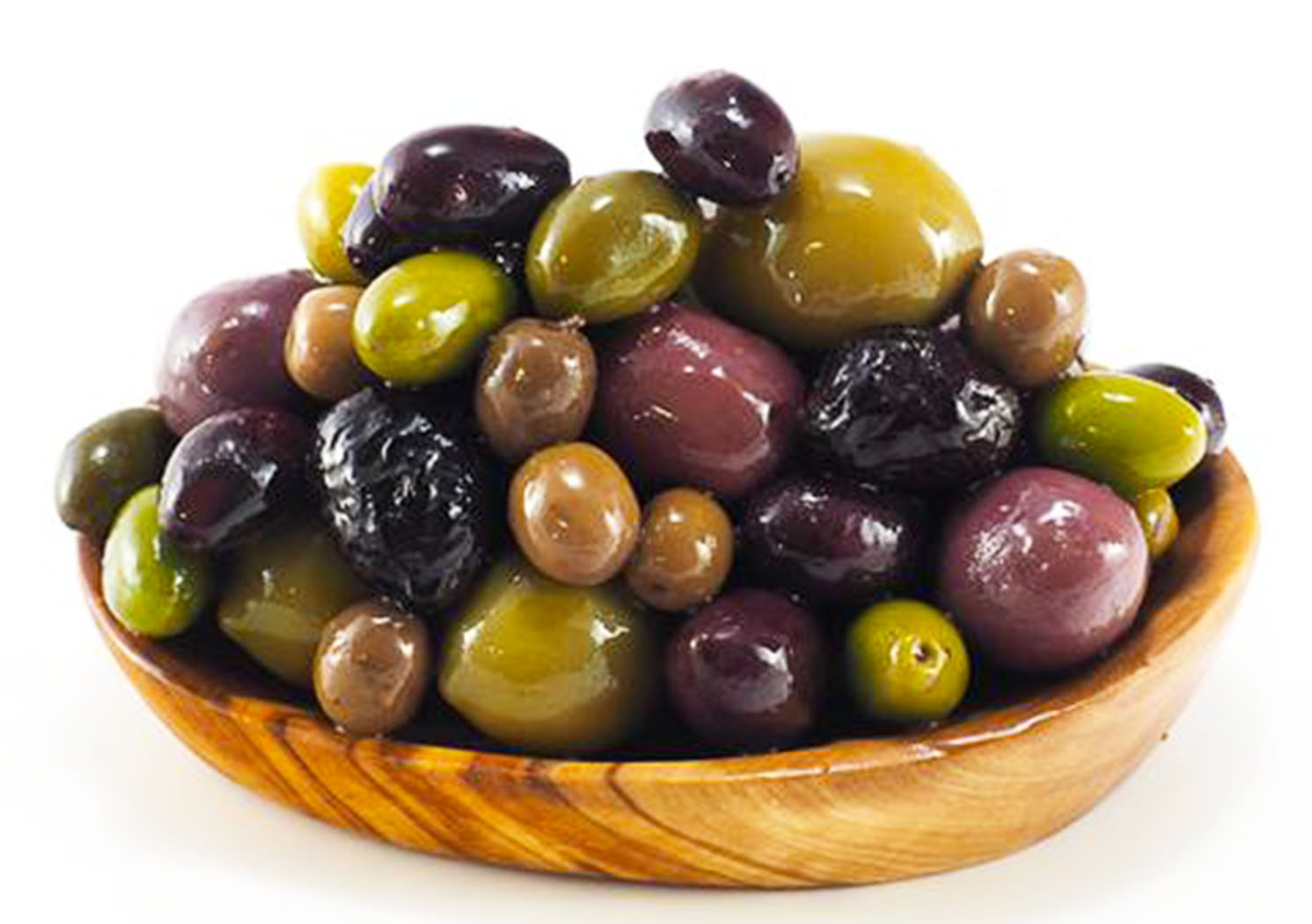Olives have been a part of the human diet for thousands of years, long before the canning industry, grocery stores and martinis came into play. In the U.S. many people think of olives as being green or black, but Italians know that there in more to an olive than its color and the diversity and versatility of the stone fruit (its technical classification) seems endless. Olives can be ground into spreads, tossed into salads, simmered in stews and sauces and baked into bread, in addition to be plopped into martinis. Their sweet, sour, salty, bitter and pungent flavors are singularly complex, making them an essential tool in any every Italian kitchen.
Olive trees are some of the oldest harvested by humans, a practice that dates back more than 8,000 years. The trees are grown not from seeds, but rather are from cut roots or branches buried in the soil, or grafted onto other trees.
The harvesting process plays a key role in determining the olive’s ultimate flavor and quality. In general, the darker the olive, the riper it was when it was plucked from the tree. In case anyone is wondering, there are no green olive trees. The color of an olive is an indication of its ripeness. Green olives ripen and transform from green to light brown, to a vibrant red and purple, to the deepest, darkest black. In general, the darker the olive, the riper it was when it was plucked from the tree.
Green olives are usually picked at the start of the harvest season, in Italy, that is in September and October. They have a firm texture and a nutty flavor. Black, or darker olives are picked in late November and December, sometimes as late as January. They tend to be softer, with a richer flavor and meatier texture.
Then there is the canned ‘black-ripe’ olive. Such olives are picked green, then pumped up with oxygen to turn them black. Their shade is then fixed with a black chemical compound called ferrous gluconate. You will not find these olives in Italian kitchens.
Rather the chemistry experiment described above, it is the cure that makes an olive an olive, imparting the characteristic saltiness, tender texture and flavor. Due to their natural bitterness, olives need to undergo a curing process before they are ready to eat. Olive curing is like fermentation – the conversion of the olive’s natural sugars into lactic acid.
There are essentially two ways to cure the olives, with variations of each. In brine-curing, fully ripened, dark purple or black olives are gradually fermented in brine for up to one year. This produces an olive that is often sweet and full of depth, since the brine acts to intensify the fruit’s natural flavors. Water-curing involves soaking and rinsing in plain water. The process is rarely used any longer because it is the slowest process of all, repeating again and again the soaking and rinsing process.
The second method is dry-curing, where olives are packed in salt for a month or so. The salt pulls the moisture and bitterness from the olives. The salt is then removed and sometimes the olives get bathed in olive oil to keep them juicy and plump. Dry-cured olives have a deeply concentrated flavor and a wrinkly, prune-like appearance. Oil-cured olives are dry-cured olives that get macerated, or softened, in oil for several months.
Olive varieties get their distinctive qualities from their genetics, region, climate and how they were harvested and cured. This result in olives with unique personalities. We have selected seven very different Italian olives to spotlight; two from Sicily, three from Puglia and the others from Lazio and Liguria.
Castelvetrano olives are bright green and often referred to as dolce. Their name is derived from the town of their origin in Sicily. They have a distinctive green hue, a meaty, buttery flesh and a mild flavor, perfect with white wine and cheese. Also from Sicily is the Saracena – an ancient olive that is also called Minuta. These small black olives are brined, or salt cured.
Bella di Cerignola are gigantic olives from Puglia. They are found in hues ranging from yellow to black. Their hefty size renders them easily to stuff, especially with garlic, cheese, capers and anchovies. Gaeta olives are also from Puglia and are small, purplish-brown and wrinkled. They have a soft, tender flesh and a tart, citrusy taste. Gaetas can be either dry-cured, or brine-cured. Try them with a long pasta served with capers and pignoli nuts. Baresane are the third Pugliese olive featured and are brine-cured, ranging in color from yellow to green to light purple. These olives have a more delicate and fresh flavor than the other varieties listed.
The Gaeta variety is a very popular black or dark purple table olive from the Lazio region and are typically brined before storing in oil. These olives are notable for their tart, citrusy flavor. Taggiasca olives from Liguria, are petite compared to Cerignola olives, but pack a lot of flavor in their small size. They are usually cured with an aromatic mixture of bay leaves, rosemary and thyme.
Olives should be relatively firm and never mushy or visibly bruised. If you are shopping for olives at a specialty store’s ‘olive bar,’ look for those that are dressed in brine, which helps them retain their moisture and flavor. It is best not to leave olives in a sealed container, so once home, store your olives in the refrigerator, soaking in the liquid they came in and loosely covered with plastic wrap. They should remain at their peak of flavor for at least a week. Finally, if you have no brine; have no fear, simply make your own – just add a teaspoon of salt to 12 ounces of water.





